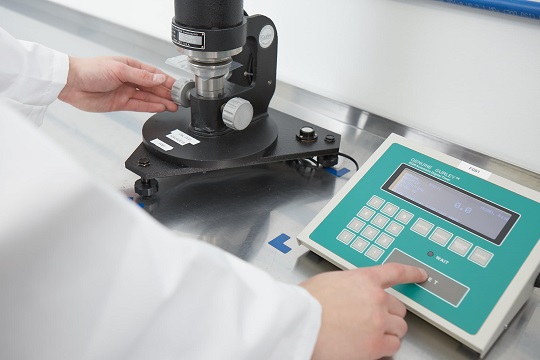What Are the Standard Techniques for Testing Material Porosity and Permeability? - smitjohn98/blog GitHub Wiki

Understanding material porosity and permeability is essential in various industries, including filtration, construction, and pharmaceuticals. These properties determine how a material interacts with fluids and gases, impacting its efficiency and durability. Various testing techniques have been developed to analyze these characteristics accurately. Porosity and permeability testing is crucial in material selection and quality assurance, ensuring optimal performance for specific applications.
Overview of Gravimetric and Volumetric Methods
Gravimetric and volumetric techniques are fundamental approaches to measuring material porosity and permeability. The gravimetric method involves weighing a material before and after a fluid absorption process. The weight difference indicates the material’s porosity by showing how much fluid has been absorbed into its structure.
Volumetric methods, on the other hand, determine porosity by measuring the volume of a fluid that can fill a material’s void spaces. This technique is particularly useful for highly porous materials such as foams and ceramics. Both methods provide insight into a material’s ability to retain and transport fluids, offering critical data for industries requiring precise material specifications.
Application of Mercury Intrusion Porosimetry
Mercury intrusion porosimetry (MIP) is a widely used technique for analyzing porosity in solid materials. This method involves applying pressure to force mercury into the pores of a sample. The pressure required to intrude the mercury correlates with the pore size distribution, allowing for an accurate measurement of porosity levels.
MIP is particularly useful in studying materials with a wide range of pore sizes, such as concrete, ceramics, and filtration membranes. It provides detailed information about pore structure, connectivity, and volume, making it a preferred choice in research and industrial applications where material porosity significantly impacts performance.
Utilization of Gas Adsorption Isotherms
Gas adsorption isotherms are another effective method for analyzing material porosity. This technique involves exposing a material to a specific gas under controlled conditions and measuring the amount adsorbed at different pressures. The data obtained is used to calculate pore size distribution and surface area.
This method is particularly beneficial for studying microporous and mesoporous materials, such as activated carbon and catalysts. It allows researchers to evaluate adsorption capacities, which are crucial in industries like gas separation, filtration, and pharmaceuticals. Additionally, gas adsorption techniques provide insights into material stability and structural integrity.
Implementation of Capillary Flow Porometry
Capillary flow porometry is used to determine the pore size distribution of a material by measuring the pressure needed to force a liquid or gas through its pores. This technique is particularly valuable for testing filtration membranes, textiles, and porous metals.
By analyzing the differential pressure required to initiate fluid flow, capillary flow porometry helps determine the largest pore size and the material’s permeability characteristics. This technique ensures that materials used in critical applications, such as medical filters and industrial membranes, meet precise specifications for efficiency and reliability.
Built Point: Capillary flow porometry is advantageous because it provides a non-destructive method for testing materials, allowing manufacturers to evaluate product quality without compromising structural integrity. The data collected from this method supports the design and improvement of high-performance materials used in various industries.
Permeability Assessment via Darcy's Law
Permeability is a crucial property in material science, and Darcy’s Law provides a fundamental approach to its measurement. This principle states that the rate of fluid flow through a porous medium is proportional to the pressure gradient and inversely proportional to the fluid’s viscosity.
This method is widely applied in soil science, petroleum engineering, and material development. By calculating permeability, researchers can determine how easily fluids pass through a material, which is essential for designing effective filtration systems, geotechnical applications, and even biomedical implants.
Built Point: Darcy’s Law is especially useful in industries that rely on precise fluid movement, such as hydrogeology and petroleum extraction. The accurate assessment of permeability helps in optimizing fluid transport systems and improving the efficiency of materials used in industrial and environmental applications.
Comparative Analysis of Testing Methodologies
Different testing methods offer unique advantages, making it essential to select the most suitable technique for specific material characteristics. Gravimetric and volumetric methods provide fundamental porosity data, while mercury intrusion porosimetry delivers detailed pore structure analysis. Gas adsorption techniques are highly effective for microporous materials, whereas capillary flow porometry is invaluable for permeability assessment in filtration applications.
Darcy’s Law remains a reliable model for permeability studies in geotechnical and engineering fields. By combining multiple testing approaches, material scientists and engineers can develop a comprehensive understanding of a material’s porosity and permeability, ensuring optimal performance in real-world applications.
Built Point: Each method varies in accuracy, applicability, and complexity, which is why industries often integrate multiple techniques for a thorough analysis. Understanding the strengths and limitations of each method allows for better decision-making in material selection and quality control.
Conclusion
Material porosity and permeability play a critical role in determining how substances interact with fluids and gases. Various testing techniques, including porosity and permeability testing, provide precise measurements that help industries optimize material performance. From mercury intrusion porosimetry to capillary flow porometry, each method offers unique insights into material structure and behavior.
Selecting the appropriate testing approach ensures reliability, efficiency, and durability in industrial applications. As technology advances, new and improved methods continue to enhance the accuracy of porosity and permeability assessments, further benefiting scientific research and engineering innovations.